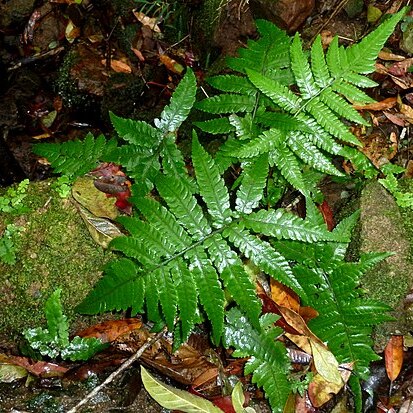Plants terrestrial, medium-sized. Rhizomes moderately stout, long creeping, ascending or suberect, with black or brown, lanceolate, entire or subentire scales. Fronds distant or approximate; stipe long, with brown, ovate to lanceolate scales at base; lamina pinnate or 2-pinnate, lanceolate, linear-lanceolate, oblong, or ovate-oblong, acuminate; ultimate pinnules pinnatipartite; pinnae or pinnules alternate, sessile, equilateral, rounded-cuneate at base, pinnatifid to pinnatipartite, segments oblong or rectangular, pinnules or segments adnate to costae or costules by narrow wings; rachis, costae, and costules grooved adaxially, grooves of costae or costules interrupted and not merging into grooves of rachis or costae; usually with brown or dark brown, vermiculate glandular hairs consisting of 1-3(or 4) rows of cells on costae, costules, and midribs. Veins free, lateral veins simple or forked. Lamina herbaceous, papery, or subleathery when dried. Sori orbicular, oblong, J-shaped, or horseshoe-shaped, abaxial or lateral, medial; indusia same in shape, membranous, entire, erose, lacerate, or ciliate, persistent. Spores bilateral, perispore with folds or spines, baculate ornamentation. x = 40.
More
Rhizome erect to creeping, scaly; scales entire, basifixed, acuminate. Fronds crowded to widely spaced, small to large. Stipe swollen, winged. Lamina 1-4-pinnate, thin, often brittle; groove of primary rachis not open at the junction of secondary rachises; rachises and main veins bearing both scales and hairs; veins free. Sori linear to oblong, single or often in pairs; indusium membranous or thick, entire or toothed.

